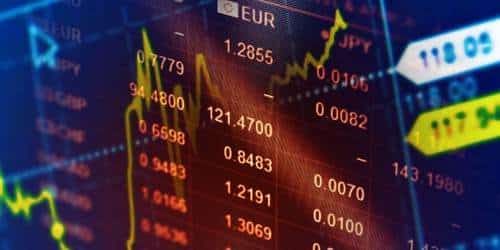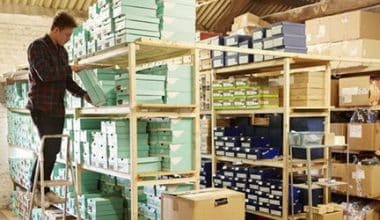To be used to their maximum capacity, the factors of production must be organized into an economy. An economy is made up of markets, which are simply a collection of buyers and sellers. In this guide, we will address what an economy is, its value, the recession, scale, types, and a host of other information you need to know. Without much ado, let’s proceed.
What Does Economy Mean?
An economy is typically location-based, such as a country or a town, and it is dependent on the resources or wealth owned by that territory. We can also define “economy” as how a country creates and consumes goods and services; hence, “economy” refers to how well consumption and production occur, as well as the quality of the goods and services.
An economy demonstrates how a region earns and spends money. It encompasses not only the production of goods and services but also the organizations and institutions involved in the production. Companies/organizations may assist in the processing or manufacture of items, which are then consumed by other enterprises or individuals. Knowing this concept might also be beneficial in addressing the question, “what is an economy?”.
Understanding Economic Systems
An economy includes all activities linked to the production, consumption, and trade of products and services in a given entity, whether it be a nation or a small town.
No two economies are the same. Each is unique in terms of resources, culture, laws, history, and geography. Each evolves as a result of the individuals’ choices and activities. Market transactions and collective or hierarchical decision-making are used to make these decisions.
History of the Concept of Economy
The term economy comes from the Greek word for home management, and it is still used in that context.
Economics was mentioned by philosophers in ancient Greece, most notably Aristotle, but modern economics emerged in 18th-century Europe, mainly in Scotland and France.
Development of Modern Economics
Adam Smith, a Scottish philosopher, and economist who published The Wealth of Nations in 1776 were regarded as a moral philosopher at the time. His contemporaries and he traced the evolution of economies from primordial bartering systems to money-driven and, eventually, credit-driven civilizations.
During the nineteenth century, the advancement of technology and the expansion of international trade strengthened international ties, a process that was exacerbated by the Great Depression and World War II. After 50 years of the Cold War, the late twentieth and early twenty-first centuries saw a revived globalization of economies.
Types of Economy
Few countries in the modern world are fully market-based or purely command-based. Nonetheless, most people favor one of these models over the other.
#1. Market-Based Economies
This is one of the types of economy. People and businesses in market-based or “free market” economies can freely exchange products and services based on supply and demand.
The United States is mostly a free market economy. Producers decide what is marketed and produced, as well as the pricing to charge. They will produce what consumers want and price what consumers are prepared to pay if they expect to succeed.
Prices and total output are determined by the principles of supply and demand through these decisions. When customer demand for a certain product rises, production rises to meet the need. Prices grow as demand rises, causing consumers to balk and reduce their purchases. The product’s demand will then fall, and so will its price.
This ongoing tug of war between supply and demand helps a market economy to naturally balance itself. As prices in one area rise in response to demand, the money and manpower required to meet that demand migrate to other sectors.
#2. Command-Based Economies
A central authority regulates production levels, price, and distribution of goods under command economies.
In such a system, the government owns industries deemed necessary on behalf of the people who use them. Company competition is discouraged or prohibited. Prices are kept under control.
Communism necessitates a command economy. Cuba and North Korea are recent instances. A command economy seeks to supplant the workings of supply and demand.
#3. Mixed Economies
In the modern world, pure market economies are unusual since there is usually some level of government intervention or central planning. Even the United States may be classified as having a mixed economy. It cannot demand production, but it may influence it. As an example:
In late 2021, President Joseph Biden directed the release of 50 million gallons of oil from the nation’s Strategic Oil Reserves, with the declared goal of driving down gasoline prices by increasing supply.
The Federal Reserve imposed a series of interest rate hikes on the nation’s banks in 2022. The goal was to boost interest rates across the economy in order to diminish demand for loans and, as a result, inflation in the cost of goods and services. In reality, most developed economies mix market-based and command-based structures. China had a command economy until 1978 when a series of changes encouraging private enterprise began.
Studying Economies
The notion of economics involves how people in a certain location or environment interact with commodities that may be valuable to them, such as how they produce, distribute, and consume goods and services. Economics is organized into two broad categories: macroeconomics and microeconomics. Microeconomics is the economic component of the economy that is based on internal elements such as companies, people, and how they carry out their activities.
Macroeconomics is concerned with external variables that inevitably affect the economy. For example, the economy in question may be part of a bigger economy, and the economic region governing elements may have an impact on it through their actions.
What Is Economy of Scale?
When asked what economy of scale is, you can respond that economies of scale are cost advantages gained by businesses when production gets more efficient. Businesses can gain economies of scale by expanding output while decreasing costs. This occurs because costs are dispersed among a greater number of commodities. Costs might be fixed or variable.
What are the types of Economy of scale?
There are mainly two types of economy of scale and they include what is listed below:
#1. Internal Economies of Scale
This economy of scale refers to a firm’s distinct economy. For example, a company may have a patent on mass-production equipment, allowing it to cut its average cost of manufacturing more than other companies in the industry.
#2. External Economies of Scale
There is economy of scale that an entire industry enjoys. Assume the government wants to enhance steel output. To that end, the government has announced that all steel firms with more than 10,000 employees will receive a 20% tax reduction.
Firms with fewer than 10,000 employees can potentially cut their average cost of production by hiring more workers. This is an example of a large-scale external economy, which affects an entire industry or sector of the economy.
What Is Economy Recession?
An economy recession is defined as a severe, widespread, and long-term decline in economic activity. Although more complex algorithms are utilized, a popular rule of thumb is that two consecutive quarters of negative GDP growth indicate a recession.
The National Bureau of Economic Research (NBER) measures recessions using nonfarm payrolls, industrial production, and retail sales, among other indicators, which goes much beyond the simpler (but less accurate) two-quarters of negative GDP metric.
When it comes to what causes economy recession, there are several economic theories that seek to explain why and how an economy enters into a recession. These hypotheses can be classified generically as economic, financial, psychological, or a mix of these variables. Some economists consider economic developments, such as structural alterations in industries, to be the most important. A rapid, persistent increase in oil prices, for example, can raise costs throughout the economy, leading to ecomony recession.
According to certain ideas, economy recession is caused by financial issues. These theories focus on credit expansion and the accumulation of financial risks during good economic times, credit contraction and the contraction of the money supply when an economy recession begins, or both. Monetarism, which holds that recessions are caused by insufficient money supply expansion, is a good example of this type of theory.
What Is Economy Value?
An economy value is worth that a person assigns to an economic good based on the benefit that the good provides. It is sometimes calculated based on the person’s willingness to pay for the good, which is typically assessed in money units. Economy value should not be confused with market value, which is the market price for a good or service, which might be more or lower than the economy value assigned to a good by any individual.
Understanding What Economy Value is
A person’s preferences define the economy value of a good or service as well as the trade-offs they are willing to make to obtain it. For example, if a person owns an apple, the economy value of that apple is the advantage that they derive from its use. If they intend to eat the apple, the economic worth is the delight and nutrients they anticipate from doing so.
The economic value of an apple is totally dependent on the subjective intention of the person valuing the apple and their relationship to it, rather than any objective feature of the apple. While the attributes of the apple may influence the person’s usage of the fruit, the person’s anticipation of how well an apple of that particular quality will suit their use is the single source of economic worth for the apple.
Economic Indicators
As previously said, macroeconomics is the study of the larger picture, which is incomplete without a collection of economic indicators. These are some of the most closely monitored indicators.
#1. Gross Domestic Product (GDP)
Gross domestic product (GDP) is the total worth of all finished products and services generated by an economy in a given year. In 2021, the United States GDP is expected to be around $23 trillion.
#2. Unemployment
The Unemployment Report calculates the number of persons who work for a living within a certain time period. More crucially, the figure is studied over time to see if unemployment is worsening.
#3. Deflation (or Inflation)
Consumer price inflation is measured and tracked in order to uncover economic concerns. The economy is in jeopardy if the rate of inflation exceeds the pace of income growth. Inflation can also be negative, but overall deflation is uncommon.
#4. Balance of Trade
The balance of trade of an economy is a comparison of the amount of money spent on goods and services imported and the amount of money earned on goods and services exported. It is primarily measured by keeping track of all things that pass through a country’s Customs office.
A country obtains a positive trade balance when it exports more than it imports. When it buys more than it sells, it has a negative trade balance. Neither is inherently good or harmful. A country may have a negative trade balance because foreign companies are aggressively investing in its future.
What is Economy and Examples?
The traditional economy, which incorporates a nation’s norms and history to drive the production and distribution of goods, is a renowned example of an economy. Agriculture, fishing, and hunting are the mainstays of traditional economies.
What is Economy Answer in one Word?
An economy is a process that prioritizes and organizes finite resources for the creation of goods and services.
What are the 4 Different Types of Economy?
A pure market economy, a pure command economy, a mixed economy, and a traditional economy are the four major types of economic systems.
What are 3 Economic Factors?
Humans rely on three basic components, known as “factors of production,” to produce what they want: land, labor, and capital. Economists occasionally include a fourth or fifth element to account for human wealth or entrepreneurial activity.
What are 5 Examples of Economy?
Five distinct examples of economic activities can be generically classified. These activities include manufacturing, providing, purchasing, selling, and consuming products and services.
What are the 6 Types of Economy?
Market economies, planned economies, centrally planned economies, socialist economies, and communist economies are examples of economic systems. All of these are distinguished by ownership of economic resources and their deployment.
Conclusion
An economy is a community that may be examined through an examination of its resource allocation. Every individual and family in the neighborhood can make a difference. Each expects a portion of the commodities and services supplied by other members of the community in exchange. Economists evaluate and quantify the operation of an economy in modern times.
Related Article
- HOUSING MARKET RECESSION: Impacts of Recession In 2023
- WHERE TO INVEST DURING INFLATION: Best 2023 Investments, Revealed!
- Market Economy: Features, Examples, Advantages & Disadvantages
- SMALL SCALE BUSINESS IDEAS 2023: (50+ideas +Business plans)
- WHERE TO INVEST DURING INFLATION: Best 2023 Investments, Revealed!
- PROFIT AND LOSS: Meaning, Examples & Difference






